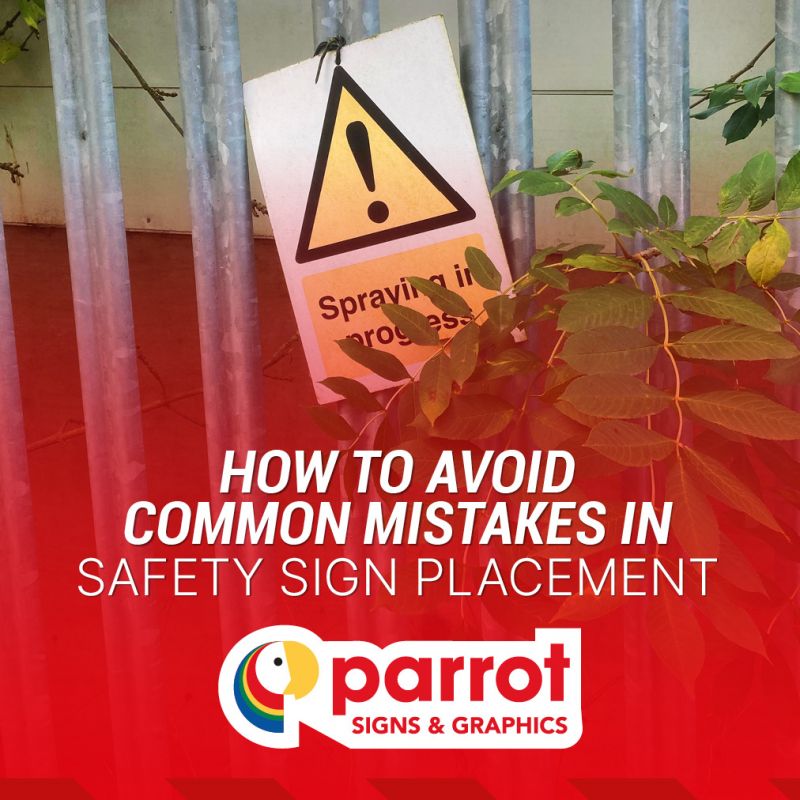How to Avoid Common Mistakes in Safety Sign Placement
Tue 30th September 2025Safety signs are one of the simplest yet most effective ways to prevent accidents and reinforce good practices in the workplace. But even the clearest, most compliant signage can fail if it's not placed correctly. Whether you’re managing a farm, running a factory, or overseeing a construction site, understanding the common pitfalls in safety sign placement and how to avoid them can make a significant difference to site safety.
Visibility Is Key
A sign that’s out of sight is out of mind and in a high-risk environment, that’s a serious hazard. One of the most common placement errors is poor visibility. This can include:
-
Signs being obscured by equipment, doors, or foliage
-
Signs placed too high or too low for average eye level
-
Poor lighting or glare making signs hard to read
Best practice: Position signs at eye level (usually 1.5 to 2 metres from the ground) and ensure they’re not blocked from view by movable objects. Regularly walk your site to check visibility especially in areas prone to changes, like storage zones or access points.
Right Message, Right Location
Safety signs should be placed exactly where the information is needed. Yet many sites scatter signs too broadly or too narrowly. For example, a "Wear Welding Mask" sign should appear directly at the entrance to an area where welding hazards exist, not on a general noticeboard 20 feet away.
Best practice: Think about the decision-making process of your staff. Place signs where a behaviour change is required; before they pick up equipment, enter a hazard zone, or begin a task.
Overload and Clutter
Another all-too-common mistake is trying to say too much in one place. A wall plastered with signs can be overwhelming and ineffective. In fact, the Health and Safety Executive (HSE) warns that "overuse of signs can cause confusion or lead people to ignore them."
Best practice: Use clear, concise signage and avoid duplication. Consider combining messages into a single, well-designed sign where appropriate. Consistency in layout, symbols, and colours will also help reduce visual clutter.
Faded or Damaged Signs
Even the best-placed signs won’t do their job if they’re unreadable. Outdoor signs are especially vulnerable to UV damage, rain, and dirt. Indoors, signs near machinery can become coated in dust or grease.
Best practice: Choose durable materials appropriate to the environment, for example, weatherproof aluminium for outdoor use, and laminated or rigid plastic for high-traffic indoor areas. Set a regular inspection schedule to check for wear and replace signs as needed.
Top tip: use a safety signs manufacturer that uses UV-stable inks. While most inks are vulnerable to light damage in some way, UV-stable inks will prolong the life of the safety sign and reduce costly replacement cycles.
Environmental Factors
Safety sign visibility can change depending on the season or working conditions. For instance, fog, heavy rain, or even bright sunlight can obscure outdoor signage. On farms, signs may be lost behind overgrown hedges; on construction sites, temporary barriers might block important warnings.
Best practice: Periodically reassess your site conditions, particularly at the change of seasons. In high-risk areas, consider illuminated or reflective signs to maintain visibility in poor light.
Final Thought: Your Safety Sign Audit
Carrying out a site-wide signage audit is one of the simplest ways to enhance workplace safety. Walk the route your employees and visitors take. Are signs clearly visible, well positioned, and conveying the right message? Do they meet current standards?
By avoiding common placement mistakes and investing in high-quality, fit-for-purpose signage, you’re not just ticking a compliance box, you’re actively protecting your people, your business, and your peace of mind.
